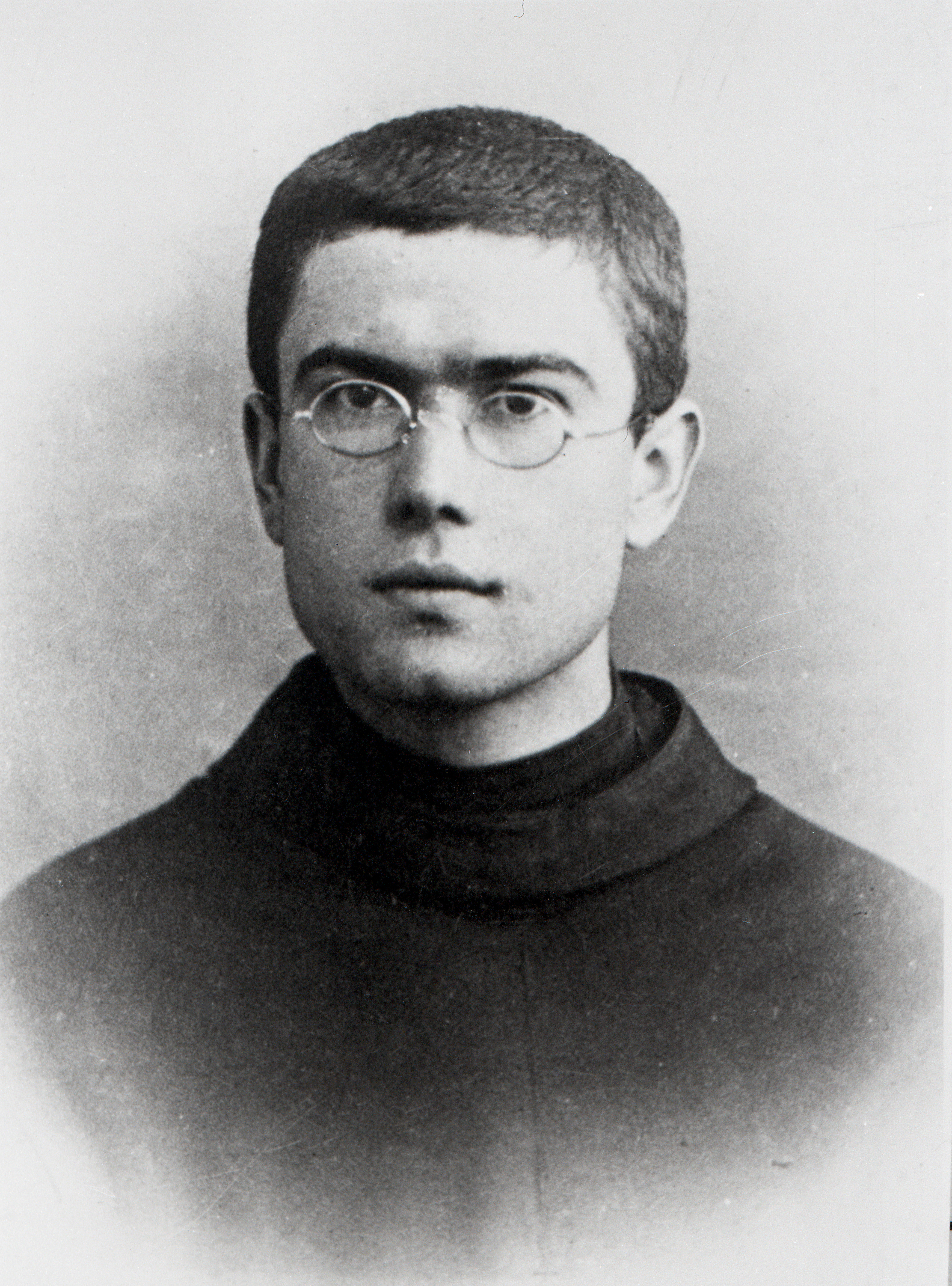Born in 1894 in Zduńska Wola, Rajmund Kolbe began his education at the Minor Seminary of the Franciscan Fathers in Lviv as early as at the age of 11 and continued on this path, joining the Conventual Franciscan Order in 1910. A milestone in the further missionary activity of Kolbe, who received the name Maximilian (and in the following years also adopted the middle name Maria), were his studies in Rome.

It was there that he established the Knights of the Immaculata (Militia Immaculatae). This was an emanation of Maximilian Kolbe's pro-social enthusiasm because the Knighthood was to be an undertaking of not only religious but also general developmental nature. Furthermore, it quickly gained momentum, resulting in the release of the monthly magazine "Knight of the Immaculate" (Pol. Rycerz Niepokalanej) in 1922. It became almost a phenomenon - while the initial print run was 5,000 copies, the final one (by then a weekly publication) just before the German invasion of Poland, was approx. 1,000,000 copies. This publishing house was a part of the operations conducted by the Niepokalanów monastery, founded by Maximilian Maria Kolbe in 1927 in Teresin. During the interwar period, it took just 10 years for this religious group to grow to over 700 members and become the world's largest. The monastery's growth was accompanied by progressive, for those times, initiatives in the field of communication. The community established its radio station, which reached the entire territory of the former Polish Republic with its broadcasts. Furthermore, there were plans to distribute community publications by air and even launch a television station.
The visionary thinking that characterized this remarkable figure was also evident in Father Maximilian's ambitious and far-reaching (literally and metaphorically) missionary plans. He embarked on a voyage to... Japan, where he resided from 1931 to 1935. While in Nagasaki, he founded a community that has been functioning to this day. During that time, a Japanese version of one of the Polish publications, "The Knight of the Immaculata", was published.
It is unclear what more this extraordinary missionary could have accomplished, considering that in 1918, he had already patented the concept of an "etereoplan" - a project for a ... space vehicle. His further activities were interrupted by the German invasion of Poland in 1939. Shortly after the Nazi takeover of this part of Mazovia, the Germans compelled the Niepokalanów community to halt its operations, and Father Kolbe, along with more than 30 collaborators, was arrested on September 19, 1939.
The German invaders fully understood the importance of the clergy in the religious, social, and economic life of the Polish people. It is for this reason, right from the beginning of the invasion of Poland, they ruthlessly persecuted the clergy. During that time, priests were among the victims of the German operation called "Tannenberg", the first of its kind conducted by the occupiers and targeting the representatives of the Polish elite. Estimates indicate that approx. 3,000 Polish priests and monks lost their lives during the German occupation, which is roughly 20 percent of their pre-war population. Among them were clergy members active in social and scientific fields, such as Father Władysław Skierkowski and Father Franciszek Rogaczewski. Out of 1,773 Polish priests imprisoned at Dachau (with a total number of 2,794), 868 died or were murdered.
In 1941, Maximilian Maria Kolbe was sent to Auschwitz, a different German concentration camp, where he secretly carried out the ministry of the word, hidden from the Germans. On July 29 of that year, during a penal roll call (following the escape of one of the prisoners), he volunteered to take the place of his fellow inmate, Franciszek Gajowniczek and joined a group of ten prisoners sentenced to death by starvation. According to another fellow prisoner, Bruno Borgowiec, Father Kolbe continued to support the other prisoners despite his tragic situation.
He died on August 14 after enduring more than two weeks of torture through starvation, finally killed by a phenol injection. The Catholic Church canonized the martyr. In 1982, Maximilian Maria Kolbe was recognized as a saint. He was canonized by Pope John Paul II.
Also in common perception, Kolbe remains a symbol of dedicating one's life to another human being and spiritual heroism in a world where such actions were not easy to undertake.
